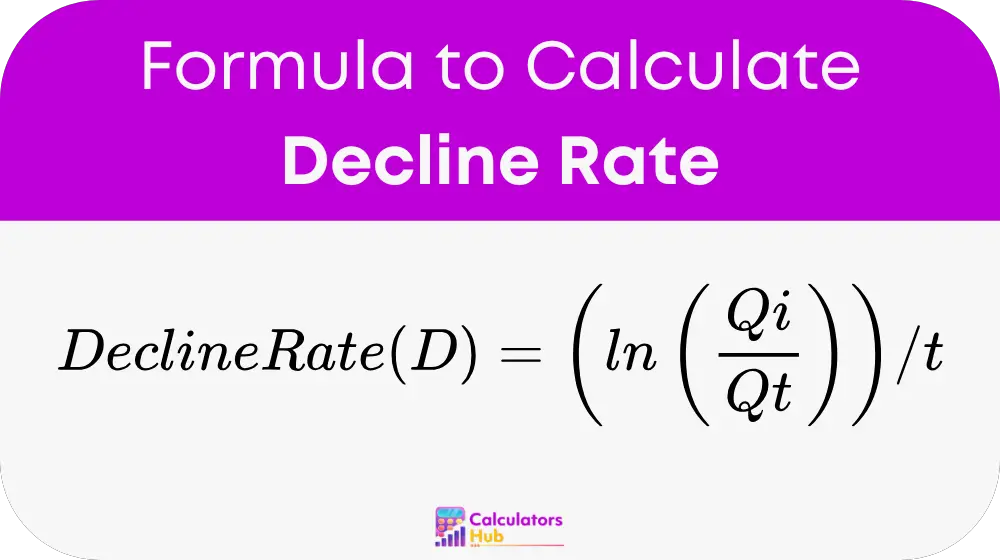A Decline Rate Calculator helps in determining the rate at which production, investment returns, resource extraction, or any measurable quantity decreases over time. It is widely used in industries such as oil and gas, mining, finance, and manufacturing to estimate future performance based on past data.
In resource extraction industries, the decline rate indicates how fast production levels are decreasing over a specific period. In finance, it measures the reduction of investment returns. This tool allows businesses, investors, and engineers to make informed decisions about sustainability, profitability, and resource management.
Formula for Decline Rate Calculator
The Exponential Decline Rate (D) is calculated using the following formula:

Where:
Qi = Initial production rate
Qt = Production rate at time t
t = Time elapsed
ln = Natural logarithm function
This formula is essential in predicting the long-term viability of resources or investments by analyzing past trends.
Decline Rate Reference Table
The following table provides estimated decline rates for different industries, helping users understand typical reduction rates in various sectors.
| Industry | Typical Annual Decline Rate (%) | Common Use Case |
|---|---|---|
| Oil & Gas | 5 – 15% | Decline in well production |
| Mining | 3 – 10% | Resource extraction reduction |
| Renewable Energy | 1 – 5% | Solar panel efficiency loss |
| Finance | 2 – 8% | Investment portfolio depreciation |
| Manufacturing | 2 – 6% | Machine efficiency degradation |
This table provides a benchmark for decline rates, allowing users to compare and evaluate their specific cases.
Example of Decline Rate Calculator
An oil well initially produces 1,000 barrels per day, but after 5 years, its output drops to 600 barrels per day.
Qi = 1000
Qt = 600
t = 5 years
Applying the formula:
Decline Rate (D) = (ln(1000 / 600)) / 5
D = (ln(1.67)) / 5
D = (0.51) / 5 = 0.102 or 10.2% annual decline
This means the well’s production decreases by 10.2% each year, helping operators make future projections and investment decisions.
Most Common FAQs
A high decline rate means resources are depleting faster, requiring additional investments in new wells, mines, or alternative sources to maintain production levels.
Yes, factors such as maintenance, enhanced recovery techniques, and operational efficiencies can slow the rate of decline in industries like oil extraction and manufacturing.
While exponential decline is common in natural resource extraction, some industries may experience linear or hyperbolic declines, requiring different formulas for more accurate predictions.